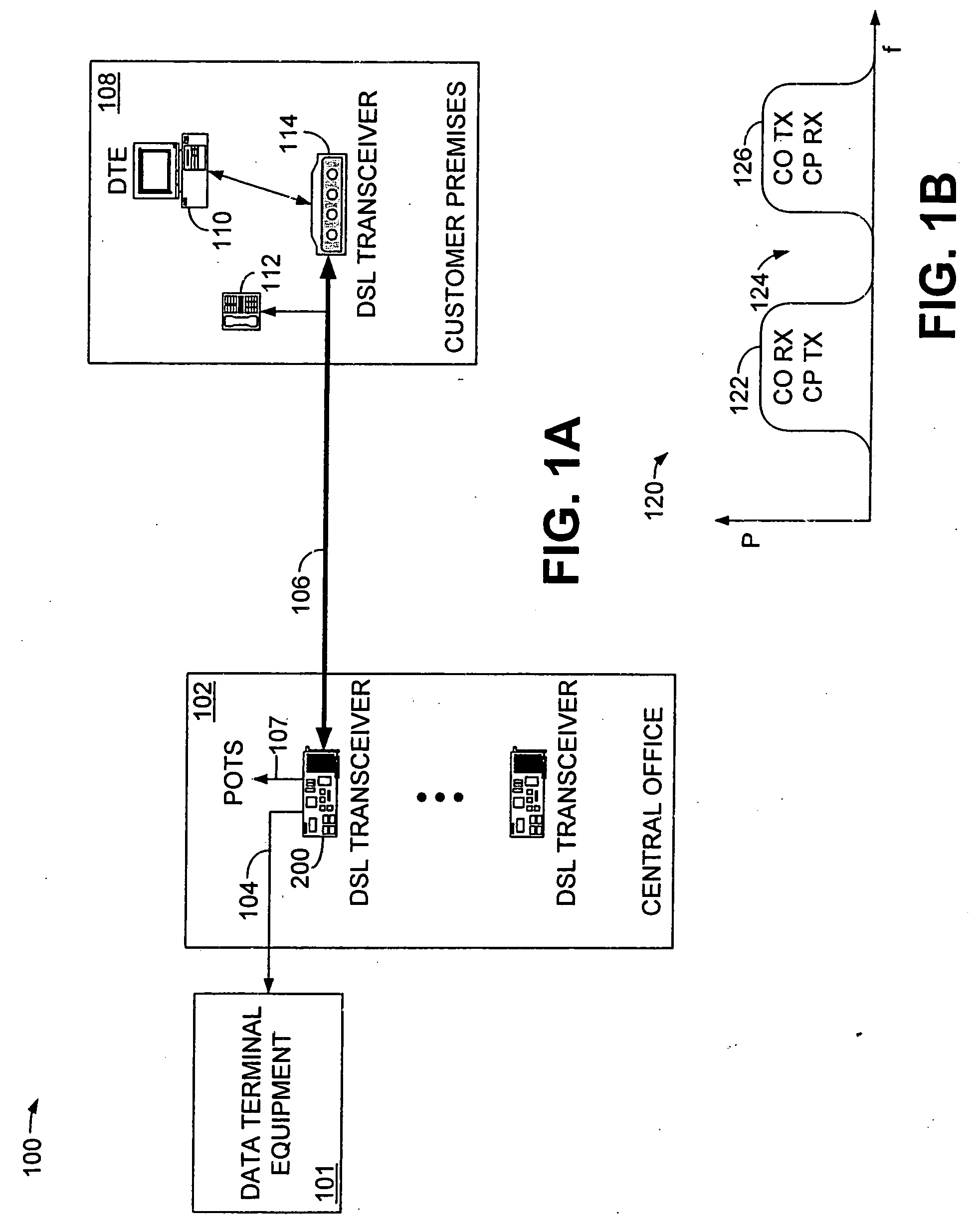Digital subscriber line driver
a subscriber line and driver technology, applied in the field of communications systems, can solve the problems of increasing the peak transmit signal power of the peak transmit signal, affecting the performance of the dsl communication device, and presenting high impedance to the communication device coupled to the lin
- Summary
- Abstract
- Description
- Claims
- Application Information
AI Technical Summary
Benefits of technology
Problems solved by technology
Method used
Image
Examples
Embodiment Construction
[0022] Although described with particular reference to an asymmetric digital subscriber line (ADSL) communication system using DMT modulation, the digital subscriber line driver of the invention can be implemented in any communication system.
[0023] Furthermore, the digital subscriber line driver can be implemented in software, hardware, or a combination thereof. In a preferred embodiment(s), selected portions of the digital subscriber line driver are implemented in hardware and software. The hardware portion of the invention can be implemented using specialized hardware logic. The software portion can be stored in a memory and be executed by a suitable instruction execution system (microprocessor). The hardware implementation of the digital subscriber line driver can include any or a combination of the following technologies, which are all well known in the art: a discrete logic circuit(s) having logic gates for implementing logic functions upon data signals, an application specifi...
PUM
 Login to View More
Login to View More Abstract
Description
Claims
Application Information
 Login to View More
Login to View More - R&D
- Intellectual Property
- Life Sciences
- Materials
- Tech Scout
- Unparalleled Data Quality
- Higher Quality Content
- 60% Fewer Hallucinations
Browse by: Latest US Patents, China's latest patents, Technical Efficacy Thesaurus, Application Domain, Technology Topic, Popular Technical Reports.
© 2025 PatSnap. All rights reserved.Legal|Privacy policy|Modern Slavery Act Transparency Statement|Sitemap|About US| Contact US: help@patsnap.com



